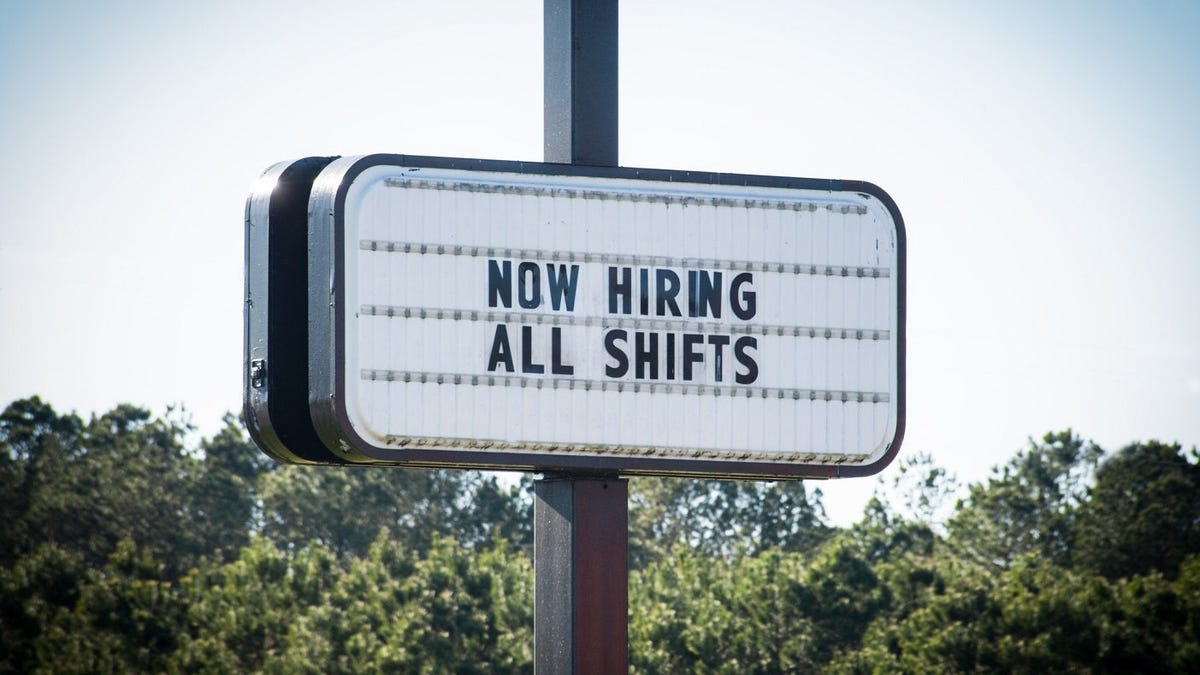US job market stays strong despite widespread layoffs
Government job cuts are at the highest they’ve been since September of 2011, with the most recent wave of layoffs hitting Army and Veterans Affairs offices.
Wibbitz
U.S. payroll growth slowed substantially in April as employers added 175,000 jobs amid high interest rates and stubborn inflation, while average pay increases fell to a three-year low.
The unemployment rate rose from 3.8% to 3.9%, the Labor Department said Friday.
Economists had estimated that 250,000 jobs were added last month, according to a Bloomberg survey.
Employment gains for February and March were revised down by a total 22,000, and the report portrays a broadly cooling labor market that should be welcomed by a Federal Reserve seeking to curtail high inflation.
Is wage growth cooling?
Average hourly pay rose 7 cents to $34.75, pushing down the yearly increase from 4.1% to 3.9%, lowest since June 2021.
Wage growth has slowed as pandemic-related labor shortages have eased, but it’s still above the 3.5% pace Federal Reserve officials say would align with their 2% inflation goal.
Many Americans, meanwhile, are benefitting because typical pay increases have topped inflation the past year, giving them more purchasing power.
Is the Fed going to cut interest rates in 2024?
Fed Chair Jerome Powell said this week that it’s “likely to take longer” for the central bank to gain confidence that inflation is sustainably approaching the Fed’s 2% goal, delaying interest rate cuts.
Friday’s weaker job numbers “across the board” suggest the central bank still could lower rates this year, economist Paul Ashworth of Capital Economics wrote in a note to clients.
Since March 2022, the Fed has hiked its key short-term interest rate from near zero to a 23 year-high of 5.25% to 5.5%, but it’s held it steady since last July as inflation has eased. Officials had forecast three rate cuts this year, goosing the stock market, but futures markets are now predicting just one decrease later in 2024.
The Fed’s preferred inflation measure remained stuck at 2.8% in March, still well above its 2% goal.
While Powell said officials will reduce rates when inflation moves toward 2%, he also said they could act if the labor market weakens significantly.
“This report is nothing like bad enough to trigger a wholesale rethink at the Fed, but things will be different if the July numbers are weaker still, as we expect,” says Ian Shepherdson, chief economist at Pantheon Macroeconomics.
Which industry has the most new jobs?
Last month, health care and social assistance again led the job gains with 87,000. Transportation and warehousing added 22,000; retail, 22,000 and construction, 9,000.
The public sector, which accounted for much of the payroll increases in recent months, added just 8,000 positions in April. Employment was flat for local governments, which had been driving the public hiring.
Leisure and hospitality, another sector that has been powering job growth, mostly in restaurants and bars, added just 7,000 jobs.
The paltry employment gains in that industry and in construction appear to support the view that unseasonably warm weather pulled forward hiring to early this year, Ashworth says. That could dampen job gains for those sectors in the spring.
How is the US job market now?
Robust job growth has continued to stun economists. Employers have added well over 200,000 jobs a month this year as they’ve shrugged off persistent inflation and the Federal Reserve’s aggressive interest rate hikes intended to tame the price increases.
A big reason is a flood of immigrants who are both juicing household purchases and providing the labor supply needed to meet the increased demand. Immigration swelled the labor supply by about 80,000 a month last year and should provide a boost of about 50,000 a month in 2024, Goldman Sachs wrote in a research note.
Immigrants are helping fill an ample inventory of job openings, Goldman says, especially in industries like construction, restaurants and hotels. Job vacancies have steadily fallen from a record 12 million in mid-2022 to 8.5 million in March, Labor said this week. That’s the lowest since February 2021 but still well above the pre-pandemic level.
Other forecasters figured employment gains softened notably in April and will pull back further in the months ahead.
Are layoffs increasing?
Behind the glitzy job numbers, the labor market is downshifting. Hires, and the number of people quitting jobs (mostly to take new positions), fell further in March and both are below pre-pandemic levels. That underscores that net job growth continues to be bolstered by historically low layoffs rather than the need for new staffers. Companies have been reluctant to let employees go following COVID-induced labor shortages.
Yet while that propped up payrolls at the start of the year, when businesses normally cut holiday workers, a scarcity of layoffs is likely becoming a less prominent factor, Goldman says.
Small business hiring intentions have fallen to the lowest mark since the depths of the health crisis in May 2020, according to the National Federation of Independent Business.
By the second half of the year, some top economists expect average monthly job growth to dip below 100,000.
